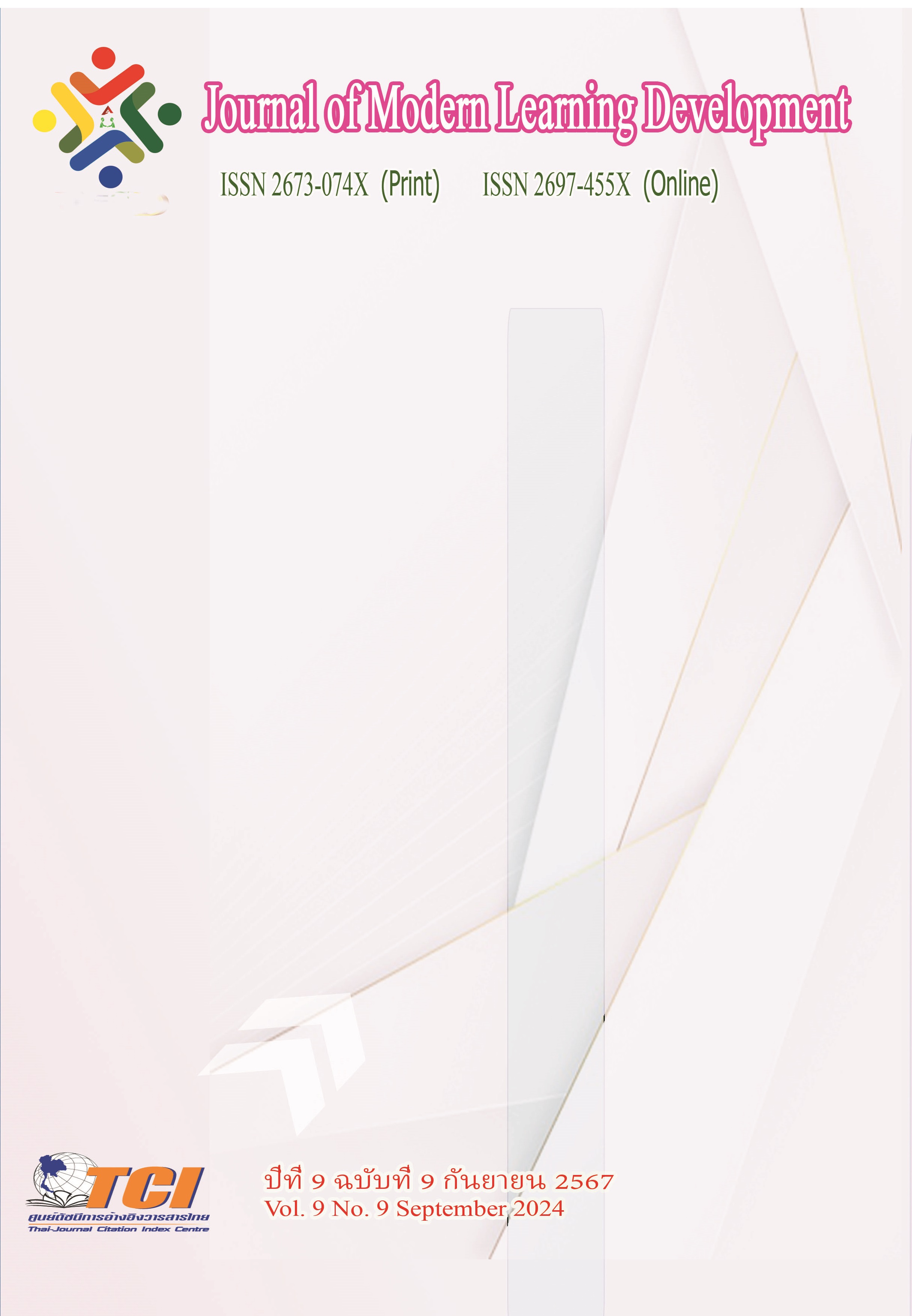Augmentative and Alternative Communication by Using Memory Books for Elderly with Dementia
Main Article Content
Abstract
Dementia is a chronic disease characterized by a loss of intellectual abilities. Symptoms include loss of memory and communication. Dementia mainly affects the elderly. Augmentative and alternative communication (AAC), or communication aids, is considered an assistive technology that can promote intellectual abilities in memory and communication. Memory books (MBs) are one of the memory aids that are used as AAC or to stimulate conversation between the elderly with dementia and their caregiver. MBs contain semantic content in the form of words, phrases, sentences, and pictures, which can stimulate memory and communication in elderly persons with dementia. It can also promote social skills because it allows the elderly with dementia to express their wants and needs, which makes them more able to participate in various daily life activities. However, a literature review found that the use of non-electronic MBs can promote communication skills for the elderly with dementia more than electronic MBs that use advanced technology. It is possible that the elderly who use advanced technology should be familiar with the use of digital media in their daily lives, which may allow them to use digital MBs more efficiently, which can also increase communication abilities.
Article Details
References
ชัชวาล วงค์สารี. (2560). ผลกระทบหลังการเกิดภาวะสมองเสื่อมกับผู้สูงอายุในประเทศไทย. วารสารมหาวิทยาลัยคริสเตียน. 23 (3), 680-689.
Aitken, K. A. (2015). The effects of a digital memory book on the quality and quantity of conversations in adults with mild to moderate dementia. [Master’s thesis, University of Canterbury]. Canterbury. https://ir.canterbury.ac.nz/server/api/core/bitstreams/6b 786438-90c2-4666-a433-08d52e18a1b8/content
American Speech–Language–Hearing Association. (2019). Augmentative and Alternative Communication (AAC). Online. Available at: https://www.asha.org/Practice-Portal/ Professional-Issues/Augmentative-and-Alternative-Communication/. [2024, March 7].
American Speech-Language-Hearing Association (n.d.). Augmentative and Alternative Communication (Practice Portal). Online. Available at: www.asha.org/Practice-Portal/Professional-Issues/Augmentative-and-Alternative-Communication/. [2024, March 7].
Beukelman, D. R., Fager, S., Ball, L., & Dietz, A. (2007). AAC for adults with acquired neurological conditions: a review. Augmentative and Alternative Communication. 23 (3), 230-242
Bourgeois, M. S. (1990). Enhancing conversation skills in patients with Alzheimer's disease using a prosthetic memory aid. Journal of Applied Behavior Analysis. 23 (1), 29-42.
Bourgeois, M., Dijkstra, K., Burgio, L., & Allen-Burge, R. (2001). Memory aids as an augmentative and alternative communication strategy for nursing home residents with dementia. Augmentative and Alternative Communication. 17 (3), 196-210.
Bourgeois, M., Fried-Oken, M., & Rowland, C. (2010). AAC strategies and tools for persons with dementia. The ASHA Leader. 15 (3), 8-11.
Brookshire, R. H. (2007). Dementia. In Introduction to neurogenic communication disorders (7th ed., pp. 531-599). St. Louis, Mo: Mosby/Elsevier.
Chang, W. Z. D., & Bourgeois, M. (2012). Effects of memory aids on the conversations of elderly Chinese persons. Asia Pacific Journal of Speech, Language and Hearing. 15 (4), 245-263.
Chinchai, S., Hanpa, P., Trevittaya, P., Rattakorn, P., Wongpakaran, N., Boonrayong, W., ... & Wanicharoen, N. (2022). Word Recognition Program for Thai Older People with High Risk of Dementia: A Quasi-Experimental One-Group Study. Dementia and Geriatric Cognitive Disorders. 51 (5), 441-448.
Communication Matters. (n.d.). What is a communication aid?. Online. Available at: https:// www.communicationmatters.org.uk/research/factsheets/what-is-a-communication-aid/. [2024, March 7].
Corrada, M. M., Brookmeyer, R., Paganini‐Hill, A., Berlau, D., & Kawas, C. H. (2010). Dementia incidence continues to increase with age in the oldest old: the 90+ study. Annals of neurology. 67 (1), 114-121.
Dementia Australia. (2017). What is dementia?. Online. Available at: https://www.dementia. org.au/sites/default/files/helpsheets/Helpsheet-AboutDementia01-WhatIsDementia_ thai.pdf. [2024, March 7].
Evans, J., Brown, M., Coughlan, T., Lawson, G., & Craven, M. P. (2015). A systematic review of dementia focused assistive technology. In Human-Computer Interaction: Interaction Technologies: 17th International Conference, HCI International 2015, Los Angeles, CA, USA, August 2-7, 2015, Proceedings, Part II 17 (pp. 406-417). Springer International Publishing.
Jootun, D., & McGhee, G. (2011). Effective communication with people who have dementia. Nursing Standard. 25 (25).
Mahendra, N., Hickey, E. M., & Bourgeois, M. S. (2018). Cognitive-communicative characteristics: Profiling types of dementia. In E. M. Hickey & M. S. Bourgeois (Eds.), Dementia: Person-centered assessment and intervention (2nd ed., pp. 42–80). Routledge/Taylor & Francis Group.
May, A. A., Dada, S., & Murray, J. (2019). Review of AAC interventions in persons with dementia. International Journal of Language & Communication Disorders. 54 (6), 857-874.
McKhann, G. M., Knopman, D. S., Chertkow, H., Hyman, B. T., Jack Jr, C. R., Kawas, C. H., ... & Phelps, C. H. (2011). The diagnosis of dementia due to Alzheimer’s disease: Recommendations from the National Institute on Aging-Alzheimer’s Association workgroups on diagnostic guidelines for Alzheimer's disease. Alzheimer's & dementia. 7 (3), 263-269.
Miller, L. (2002). Effective communication with older people. Nursing Standard (through 2013). 17 (9), 45.
Tantanokit, T., Bosittipichet, T., & Leesri, T. (2021). The study of prevalence and associated factors of dementia in the elderly. Siriraj Medical Journal. 73 (4), 224-235.
Taibo, M. L. G., Amado, P. P., Domínguez, N. C., Iglesias, P. V., & Real, T. G. (2014). Conversations about self-identity in Alzheimer disease: augmentative and alternative communication memory books as an aid. Revista de logopedia, foniatría y audiología. 34 (2), 60-67.
Waller, A. (2019). Telling tales: unlocking the potential of AAC technologies. International journal of language & communication disorders. 54 (2), 159-169.
World Health Organization. (2023). Dementia. Online. Available at: https://www.who.int/ news-room/fact-sheets/detail/dementia. [2024, March 7].


